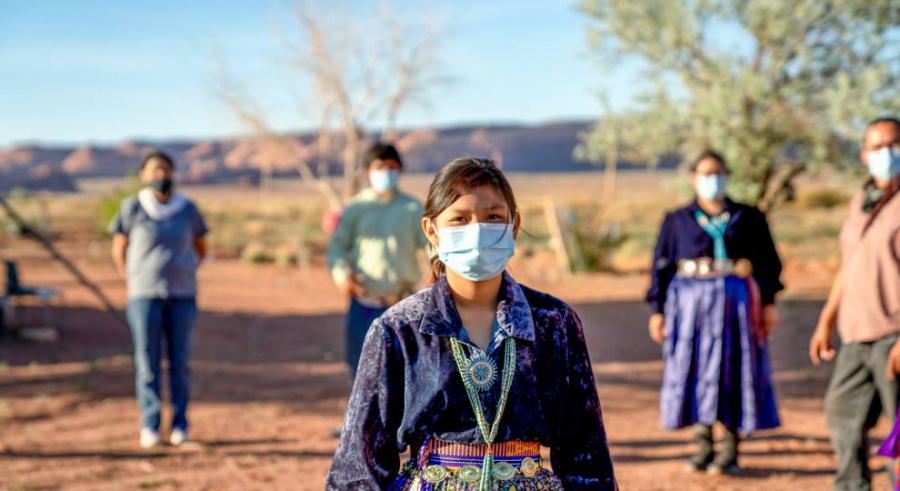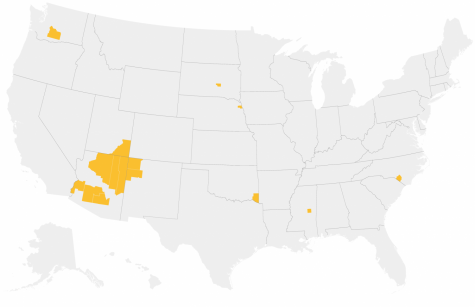
By Clara Helm | Head Editor & Gisele Brandt | Head Editor
September 9, 2020
Despite a lack of media coverage, Native American communities have been impacted severely by COVID-19, reporting higher infection rates than the most devastated states. However, Native American communities continue to be ignored, despite their pressing need for assistance.
Lacking racial and ethnic data, the Alaska Native and American Indian tribes have become particularly vulnerable to the disease as its effects on their communities are poorly understood. Most hospitals do not offer the option to select Alaska Native or American Indian as a race, and people who fall under these categories end up selecting “other.” As a result, the effects of COVID-19 on these communities are often hard to trace. Additionally, 91.6 percent of AN/AI COVID-19 patients had unknown or missing data of underlying conditions or health problems compared to only 72.7 percent of white patients, according to the Center for Disease Control and Prevention. This insufficient data within the community has contributed to inadequate healthcare services as the mortality and morbidity rates among AN/AI populations have been underestimated.
Native Americans’ underlying generational health problems are also detrimental to the situation, as many suffer from conditions such as diabetes, heart disease, and chronic respiratory disease. The increased likelihood of these types of conditions can be traced back to extreme poverty and traumatic experiences—loss of land, community, and family—passed on through the generations. Other factors such as water insecurity, overcrowding, and underfunded health clinics also contribute to Native American susceptibility.

Additionally, tribal governments cannot solely rely on their citizens to pay taxes due to the disproportionately large amount of unemployed inhabitants and high poverty levels. This makes it harder for tribal governments to be able to tax in the same way as local, state, and federal governments can in terms of income and property taxes, forcing them to rely on native businesses, such as casinos, to provide social and health services on their lands. During COVID-19, revenue has been slashed considerably as casinos continue to stay closed, resulting in a $4.4 billion loss in economic activity according to the Center for American Progress.
The Indian Health Service (IHS), a branch of the Department of Health and Human Services, provides federally funded healthcare to all nationally recognized tribes as established by multiple treaty agreements and court rulings. The IHS was a chronically underfunded agency before COVID-19 hit, with a 25 percent staffing shortage at facilities on average, but during COVID-19, they have still received less funding from the CDC than some cities. Total Tribal COVID-19 relief funding is $205 million while places like Los Angeles County and New York City have received $336,599,004 and $851,399,960 respectively. While the Coronavirus Aid, Relief, and Economic Security Act (CARES Act) has provided one billion dollars in financial aid to the IHS, the American Progress Organization estimates that unmet needs would total around $32 billion. Without proper funding for healthcare, Native Americans are left at an even greater disadvantage than the rest of the country as reservations attempt to manage the spread and mortality rates of the virus.
“It’s just…a cultural and shameful thing that the US doesn’t try to recognize,” senior Eve Richardson said when asked why she thinks media coverage hasn’t been focused on Native American Reservations. “We are clearly not getting any other news coverage except for a single story…it definitely makes sense they focus on the hubs such as New York and California and ignore smaller groups that are being more affected.”
The pandemic’s effect on our Native American communities should make us question our government’s ability to uphold its responsibilities and attentiveness to this important minority community. We need to honor our Native American communities better by fixing broken systems and giving better financial support to help them escape poverty and generational health problems.

I haven’t looked into it myself, but do you know how, if at all, this issue is being addressed with the new relief bill going through our legistlative branch?